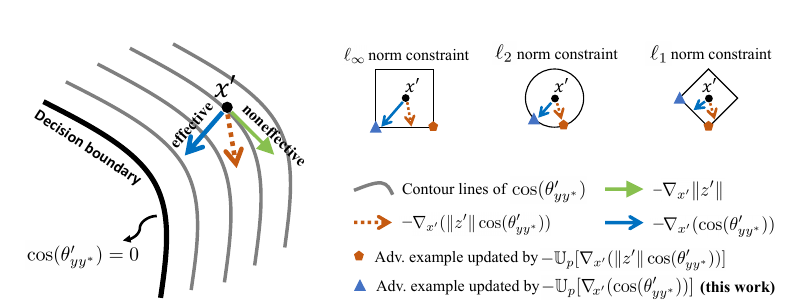Boosting Adversarial Training with Hypersphere Embedding
概
在最后一层, 对weight和features都进行normalize有助于加强对抗训练.

主要内容
一般的神经网络可以用下式表示:
\[f(x) = \mathbb{S}(W^Tz + b),
\]
其中\(z=z(x;\omega)\)是encoder部分提取的特征, \(W=(W_1, W_2,\ldots, W_L), b\)分别是最后的权重和偏置, \(\mathbb{S}\)表示softmax.
hypersphere embedding (HE):
\[\widetilde{W}_l = \frac{\widetilde{W}_l}{\|W_l\|}, \widetilde{z} = \frac{z}{\|z\|} \\
\widetilde{f}(x) = \mathbb{S}(\widetilde{W}^T\widetilde{z})=\mathbb{S}(\cos\theta).
\]
进一步添加一些margin:
\[\mathcal{L}_{ce}^m (\widetilde{f}(x), y) = -1_y^T \log \mathbb{S}(s\cdot (\cos\theta -m \cdot \mathbb{1}_y)).
\]
为什么要这么做呢? 作者觉得, 生成对抗样本最有效的途径是旋转角度, 即图中的蓝线. 如果你不限制\(z\)或者\(W\), 那么梯度会同时在模的大小的上下功夫, 这并不高效.


